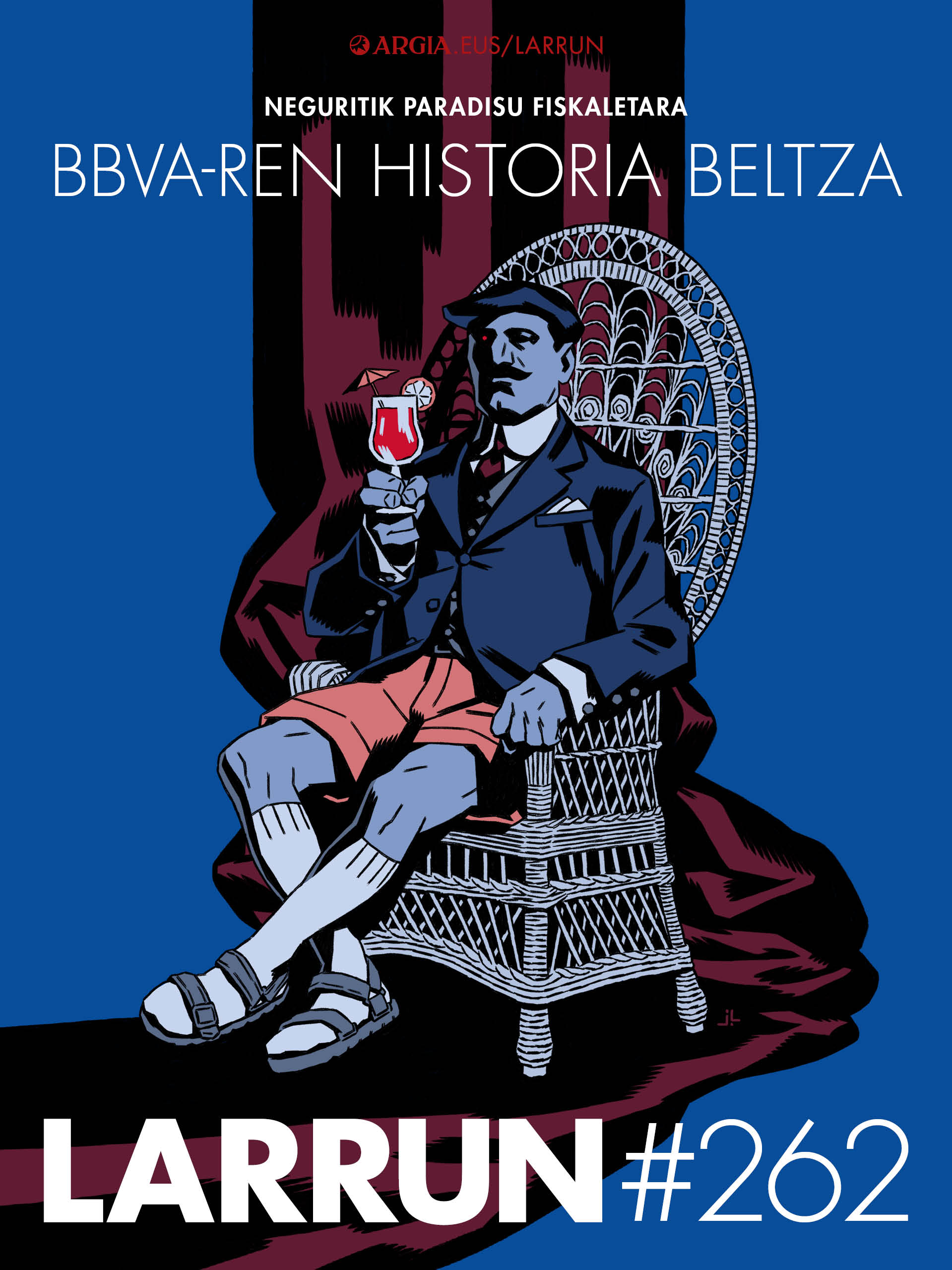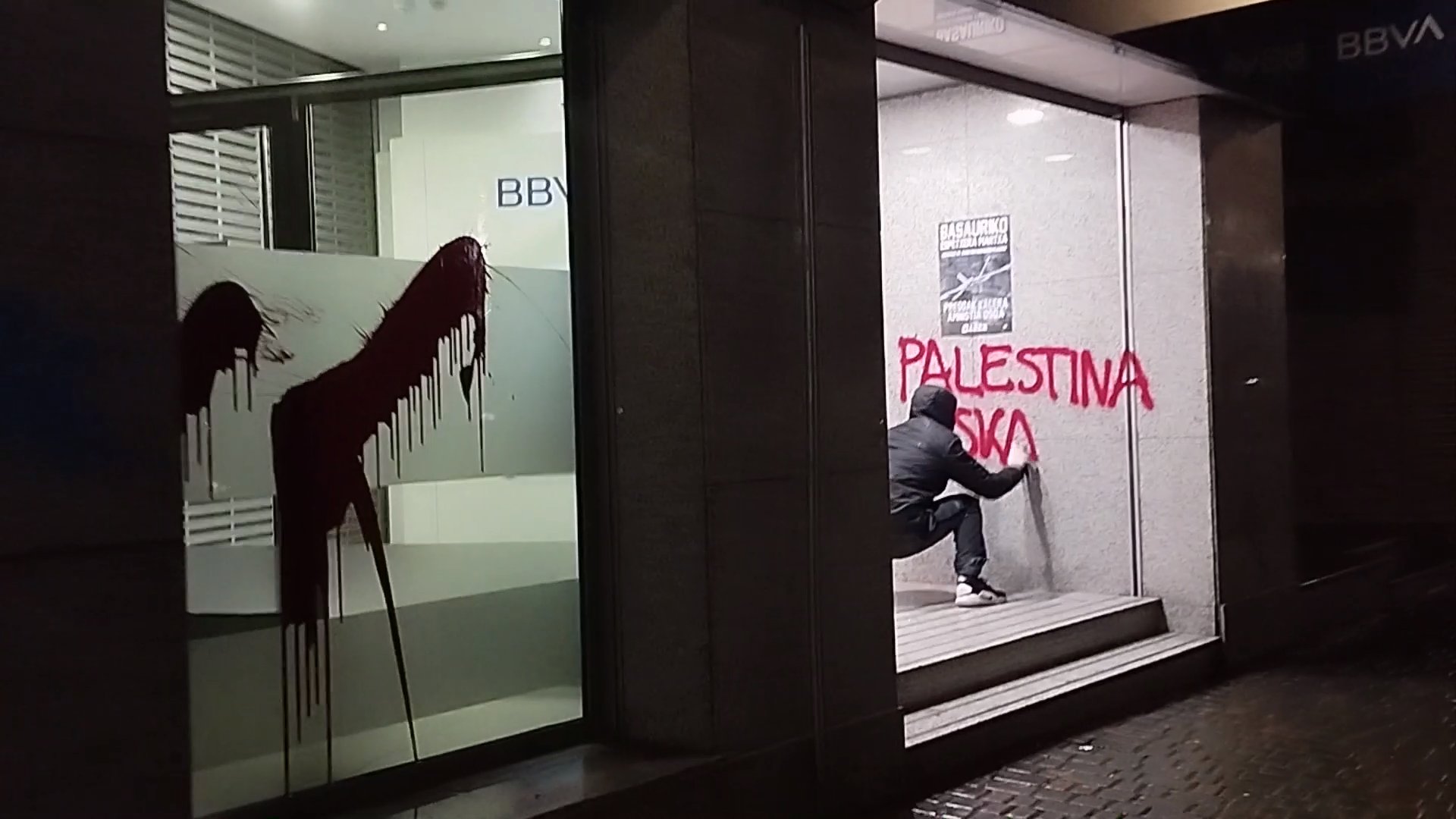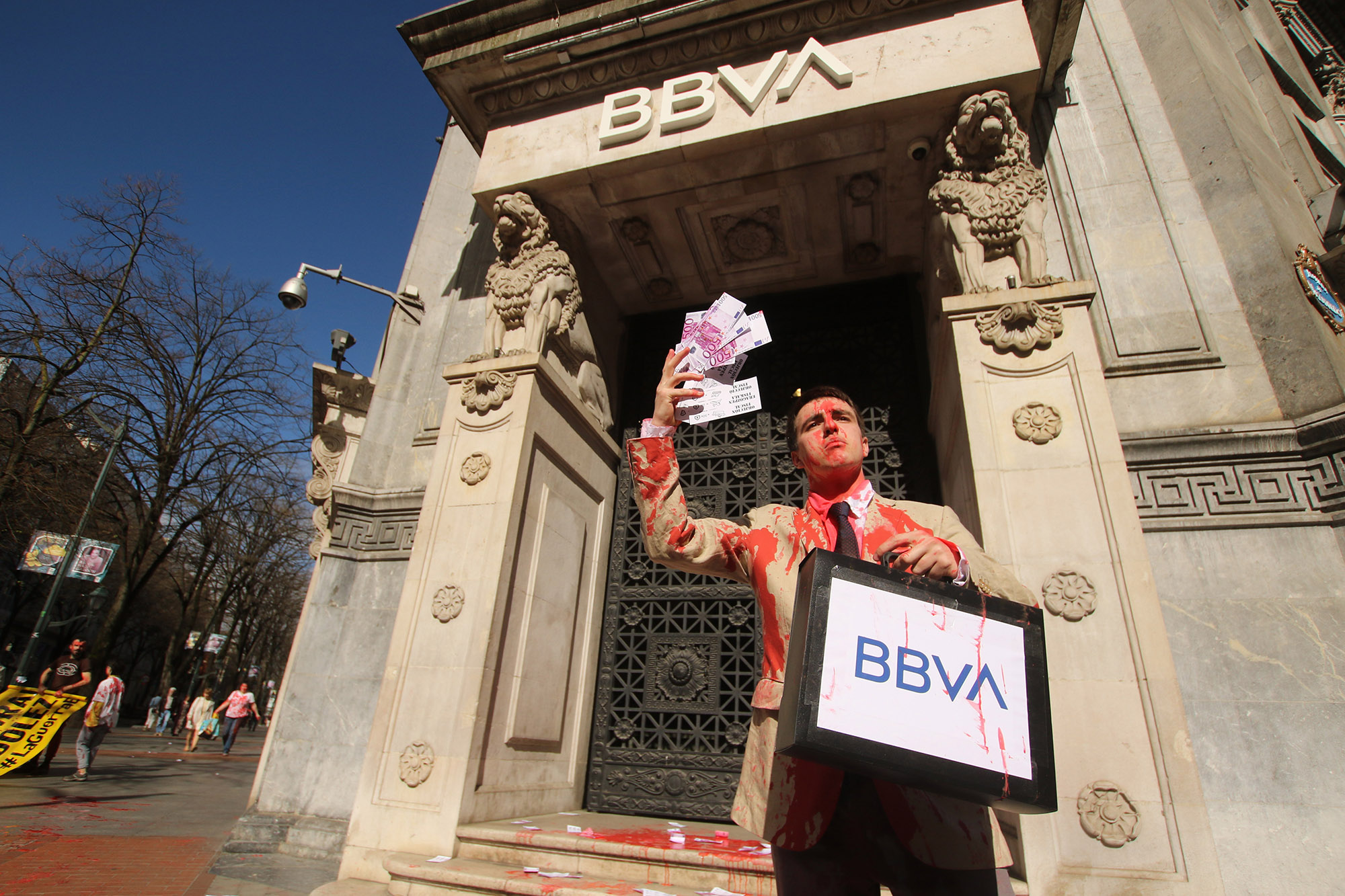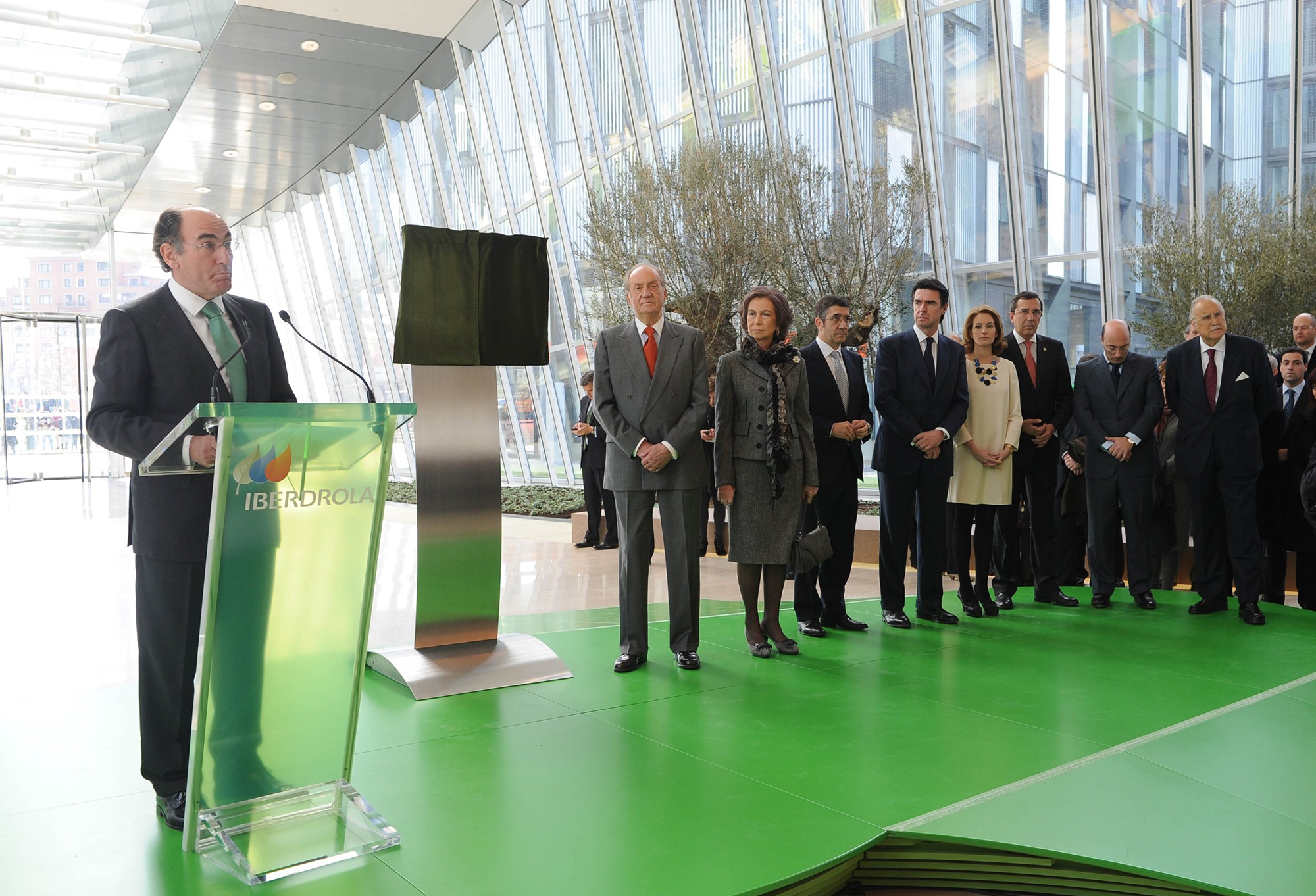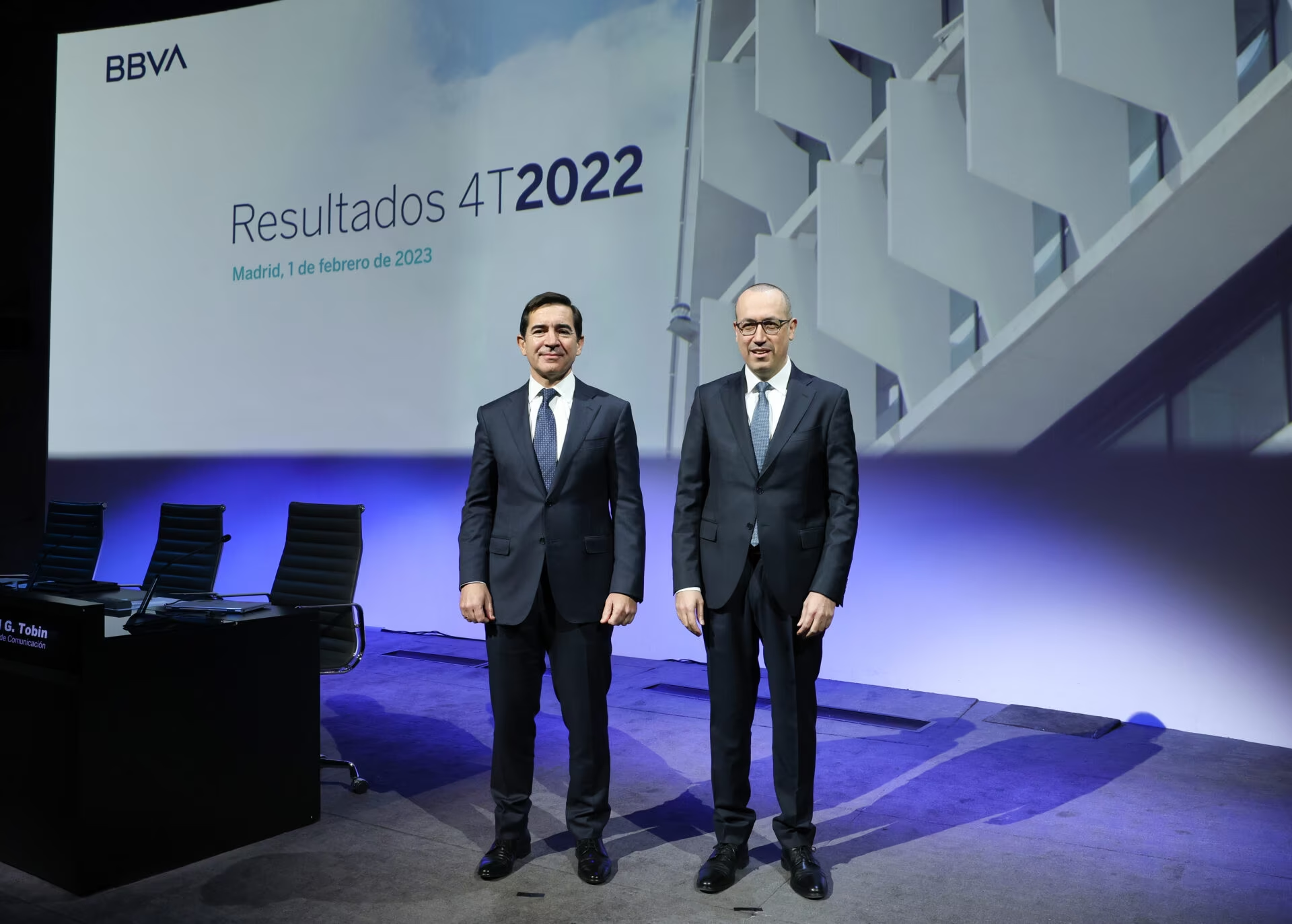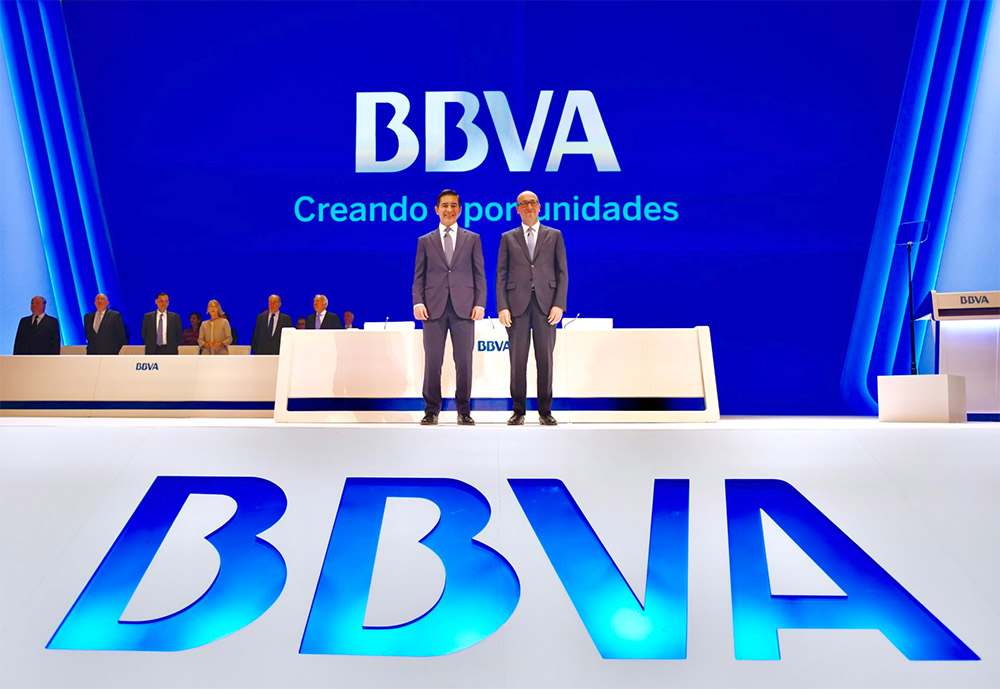A story of Basque capitalism
- The Banco Bilbao Vizcaya Argentaria is not from Bilbao or Bizkaia, it flew long ago to Madrid and from there to the claws of international investors with no other homeland. The fact that Vizcaya and Bilbao look at the banks leads us to talk about the “Basque” oligarchy arising from the heat of sweat and the oppression of thousands and thousands of people. Or in one word: Neguri.
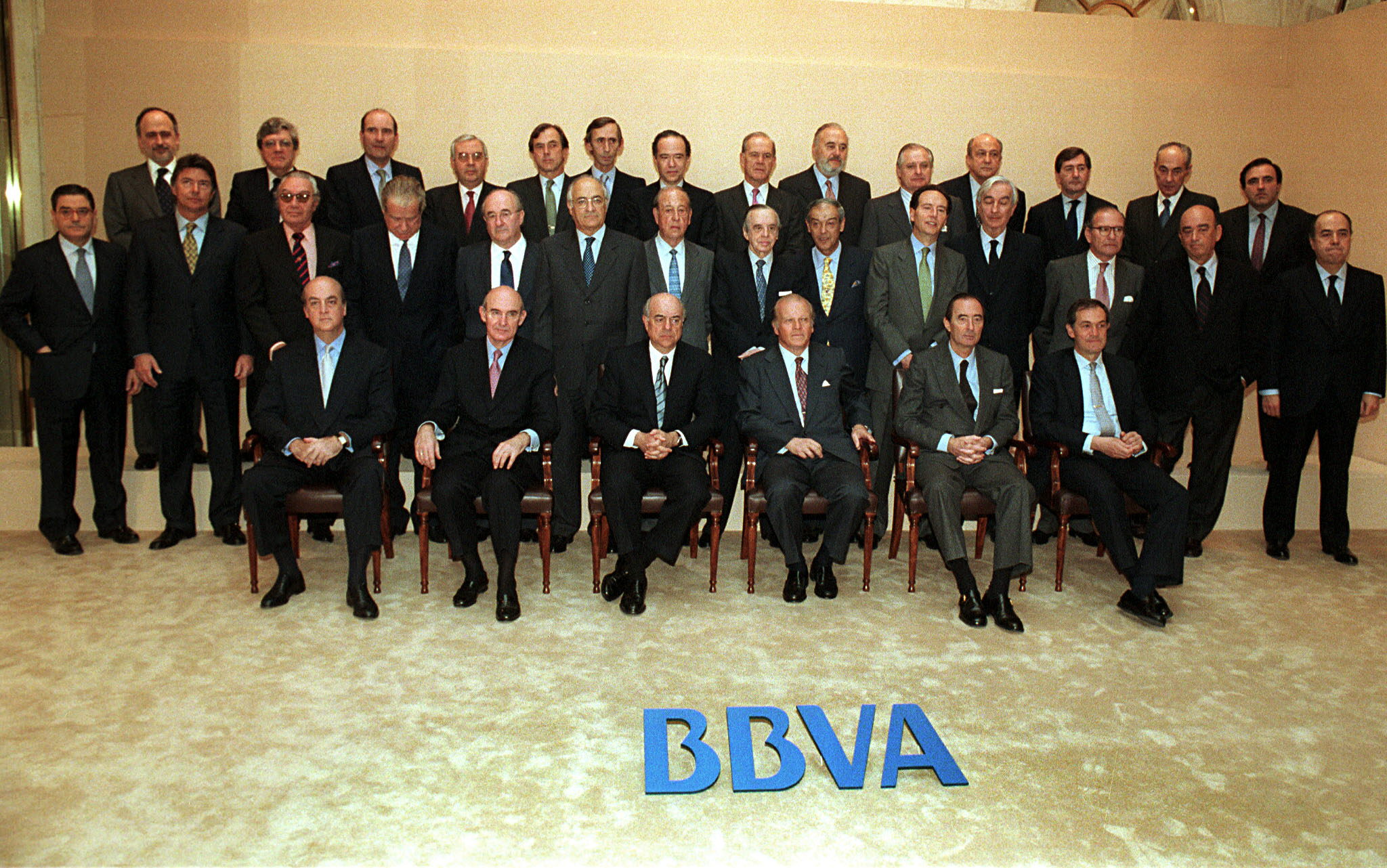
Aguirre, Ampuero, Careaga, Delclaux, Echevarrieta, Icaza, Lequerica, Lezama-Leguizamón, Lipperheide, Mac Mahon, Martínez Rivas, Sendagorta, Sota, Ybarra, Zubiría, Barandiarán, Basabe, Knörr. For decades, BBVA is also the story of those almost endogamic Neguri families who have joined each other through shared armchairs in business committees or marriages. These oligarchs, rooted in the Franco's cavities, not only owned the second largest bank in the Spanish state in the 1990s, but also controlled Telefónica, Iberdrola and Repsol. And within a decade of this summit, sheltered in offshore tax havens, they were ostracized by the Wall Street wolves, driven by Aznarism. The development of this small neighborhood of Getxo is a way to explain or understand the near history of Euskal Herria.
The 600 pages of BBVA’s Black Book (BBVA’s Black Book), published at the end of 2020 by journalist Oriol Malló Vilaplana (Barcelona, Catalan Countries, 1967) are a dark history of the West of Bizkaia and the Basque Country. It talks about plundering, clientelism, corruption, bank-driven economic crises. Enter the insides of BBVA, immersed in the sewers of the Spanish system, with many known names: Bourbons, Franco, González, Aznar, Garzón, Villarejo. And also the labor struggle, Lemoiz or ETA.
The book depicts the shadows of the oligarchy cultivated with Vizcaya “the electric bank” and Bilbao in an “iron bank”, from the exploitation of the mining lands, extremely rich in the 19th century, to becoming a multinational that speculates throughout the value chain.

It is a highly documented, rigorous and, of course, daring work. Because it is not easy to publish this kind of work in these times, because many publishers in the Spanish State depend on bank credits. This is how we better understand why Txalaparta's friends have been the only ones who have been willing to publish the book.
This book comes “late and bad”, according to the author, as BBVA prohibited the public from making known the tests of its trileros game. In 2007, Malló had in his hands the most exclusive one a journalist can dream of: David Martínez Madero, anti-corruption prosecutor of the National High Court of Spain, offered to contact the deep throat of the “BBVA case”: Nelson Rodríguez López, legal advisor to the BBV International Investment Corporation of Puerto Rico, who personally dealt in the 1990s with the management (and laundering) of the purchases of the main banks of Mexico, Colombia, Peru and Venezuela. That is, it obtained essential information on the case of the secret accounts of BBVA, one of the most relevant legal facts in the history of Spanish capitalism. Or using the words of Malló: “The only time when the lords of Neguri believed that heaven could fall upon themselves.”
But banking always won. After some surprising and interested movements, they left the witness “sold”. In a few months he lost the exclusive, the main sources and privileged access to the information he was going to put in serious port the second most important bank in Spain. The book froze. And fortunately, he's now seen the light.
The atmosphere of the time when Bilbao was put on sale and decided to demolish the Biscay industry is present in the book. He wished to recall that “Bilbao insumiso” known to the author in the 1980s, today “buried in the mausoleum of the Guggenheim, under a city of services full of tourists, proud of the triumph of civilizing urbanism and its iconic temples, without street fights and rebellious workers”.
Let us enter, therefore, in the dark portrait of the Basque oligarchy and its banks, based on the work of Malló.

Oriol Malló Vilaplana
He has a long journalistic career and has published, among others, 10 books. He cultivated the armed conflict in Northern Ireland and the war in Yugoslavia, which earned him the Catalan Journalism Prize in 1992. That same year, when El Temps was a journalist from the department of culture in the middle, he was arrested and tortured in the macro-network against Catalan independence before the Olympics in Madrid. It was then that he first met one of the protagonists of this book: Baltasar Garzón Real. When he explained to him the tortures of the civil guards, “all he did was look at the roof, while ordering me to be imprisoned. Garzón wouldn’t hear, or alter her face.” After 100 days in jail, he was released free of charge. In 2004, for not investigating torture in this case, the Spanish State was punished by the European Court of Human Rights. Malló has been “uprooted” in Mexico since 2006. There, he has continued to work mainly on issues of historical memory, economy and international.
Bank, homeland and family
“These are the three references of my life.” These are words of Emilio Ybarra Churruca when he took office as director of the BBV in 1990. More than the words of the last Mandian representative of Neguri in the direction of BBVA, his order is special. The bank is always the first. Perhaps because you can buy everything else and because in the bloodline of the Ybarrahs, the homeland and and the political family are obvious.
After graduating from the University of the Jesuits of Deusto, in full Franco and at the age of 25, he was deputy mayor of Bilbao. After being the manager of Orconera, the company of the Ybarreses that managed the main mines in Bizkaia, he developed his professional life at the Bank of Bilbao. When he met with the Banco de Vizcaya, he was for many years the first president of BBV, and later the president of BBVA. Throughout this time, along with his brother Santiago, they controlled the Vocento group until he was in charge of delegating this responsibility to his son Ignacio.
Jesuits, Franco, political responsibilities, family companies, the media and the bank. Recurrent variables in the history of BBVA and the Basque oligarchy with strength in Neguri. Move from professional policy to the advice or delegation of a bank or energy company, revolving doors, which has not been invented today. We are now accustomed to these retirement dolls, but in the last two centuries it has been a common practice among a few. And Bilbao has been one of its squares.
At what point did the Bizkaia economy and politics become the owners of those surnames and those families who are engaged in eating and rotating in the great responsibilities? And how? To do this, you have to look at Neguri's back, across the Nervión Valley.
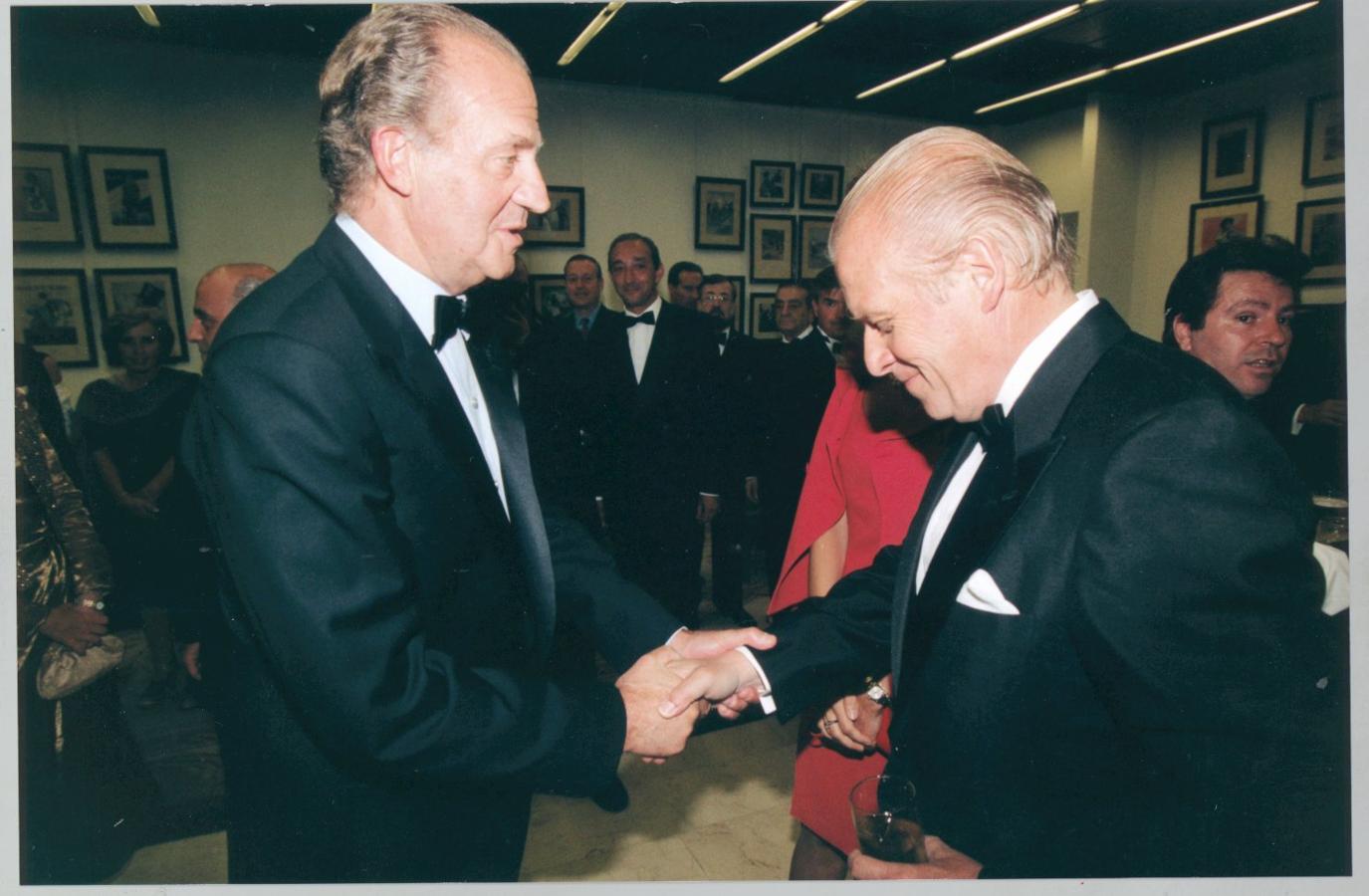
Original colonial accumulation and red gold
exploitation of the huge mines in the mining area, iron alloy, exports to Britain, investments in railway construction, shipbuilding and electricity generation (Iberian Hydroelectric, which would eventually be Iberduero and eventually Iberdrola)... Through them the empire of Neguri was compacted and became, today, synonymous with what this neighborhood suggests: the oligarchy.
But all this would have been impossible without the capital accumulated by Spanish colonialism, especially in America. The success of the Basque banks is based on the benefit gained by some Basques who participated in the looting of the people ' s property, in the slave trade and in the management of the colonies.
One of them was José Ignacio Aguirrebengoa and Aguirre, a banker of Zumarraga who lived in Paris. After forty years of fortune in Mexico, he left there in 1824, together with gold and silver boxes, shortly before the Mexicans detached from the yoke of the kingdom of Spain and promulgated the first constitution. It was, together with Lekeitio José Javier Uribarren, one of the main links between Parisian finances and the Basque elites. In these avenues, transnational financial capital emerged, which catapulted the possibilities of businessmen towards industrial capitalism in the Bilbao environment.
This financial capacity with roots in the colonialist plunder plus red gold extracted from the rich streaks of the Trapagaran and Triano Mountains, ferric oxide mineral, reddish hematites with 70% iron. The sum of these two elements gave rise to the second industrial revolution in the west of Euskal Herria.

Photo: Minero Museum
Thousands of miners worked actively and without contracts, years before in communal lands and before they were privatized in the hands of the imminent Vizcaine oligarchy.
That was the first trampoline of the Basque banks. Over the next few decades, he offered him the conditions to own. And, of course, it also gained the benefit, then reinvested in almost all sectors of society, under the direction of the Bank of Bilbao.
The only competitor that managed to progress under the Bilbao domain was created by the Biscayan oligarchy itself on March 26, 1901: Banco de Vizcaya. His commitment to the hydroelectric industry gave him the nickname of “electric bank.”
These same families that contributed to the creation of the Vizcaya Bank, the business group Ybarr-Zubiria-Vilallonga, – as it could not otherwise be, united by fraternity and business – a year later, participated in the formation of the Altos Hornos de Vizcaya (AHV). Thomas Zubiria Ybarra was the leader of the well-known factory during the first three decades and until his death.
Between the Royal Maritime Club of the Abra (Getxo Nautical Club), the Bilbain Society (cultural meeting point of the bourgeois) and the Neguri Golf Club there was a genuine plutocratic society. In the words of British Hispanist Raymond Carr, it is more clearly reflected: “From 1900 on, the richest men in Spain, with a few exceptions, were Basque.” And the expansion of these oligarchs did not stop, despite the republics, dictatorships or world wars.
In short, the credit demand for mining, industry and export guaranteed the growth of Basque banks until this cycle ended in the Nervión area. Then a long process of expansion began, first in the Iberian Peninsula and, finally, in America. But that's what we'll talk about later. Fascism is playing the door.
Free money
When the coup d’état failed in 1936 it became war and class struggle, the banking, the most prudent of the precautions, did everything possible to move the fund to the safe rear, Portugal and England. From there they protected the Francoist currency and helped the fascist attack on the Republic.
Thanks to the thesis of former banker José Angel Sánchez-Asiain, who belonged to the directorates of the AHV, Iberduero and the BBV, on the finances of the two parts of the 1936 war, we know that the voluntary cooperation offered by the great millionaires of the Spanish State was fundamental for the fascists to be able to obtain fresh money, to guarantee credits from international banks and to facilitate the path to the fascists.
The financial commands reached the villages with the troops of the nationals to get the offices “recovered” to the reds immediately. Since September 1936, the National Defence Commission had exclusive competence in the matter of confiscation of property and property of any person related to bodies of the Popular Front or similar parties. A wholesale tidy plunder system. The winners recovered theirs and much more.
According to data from Sánchez-Asiain, the banks of Vizcaya and Bilbao gained more than in the years before the war in the three years of the war.
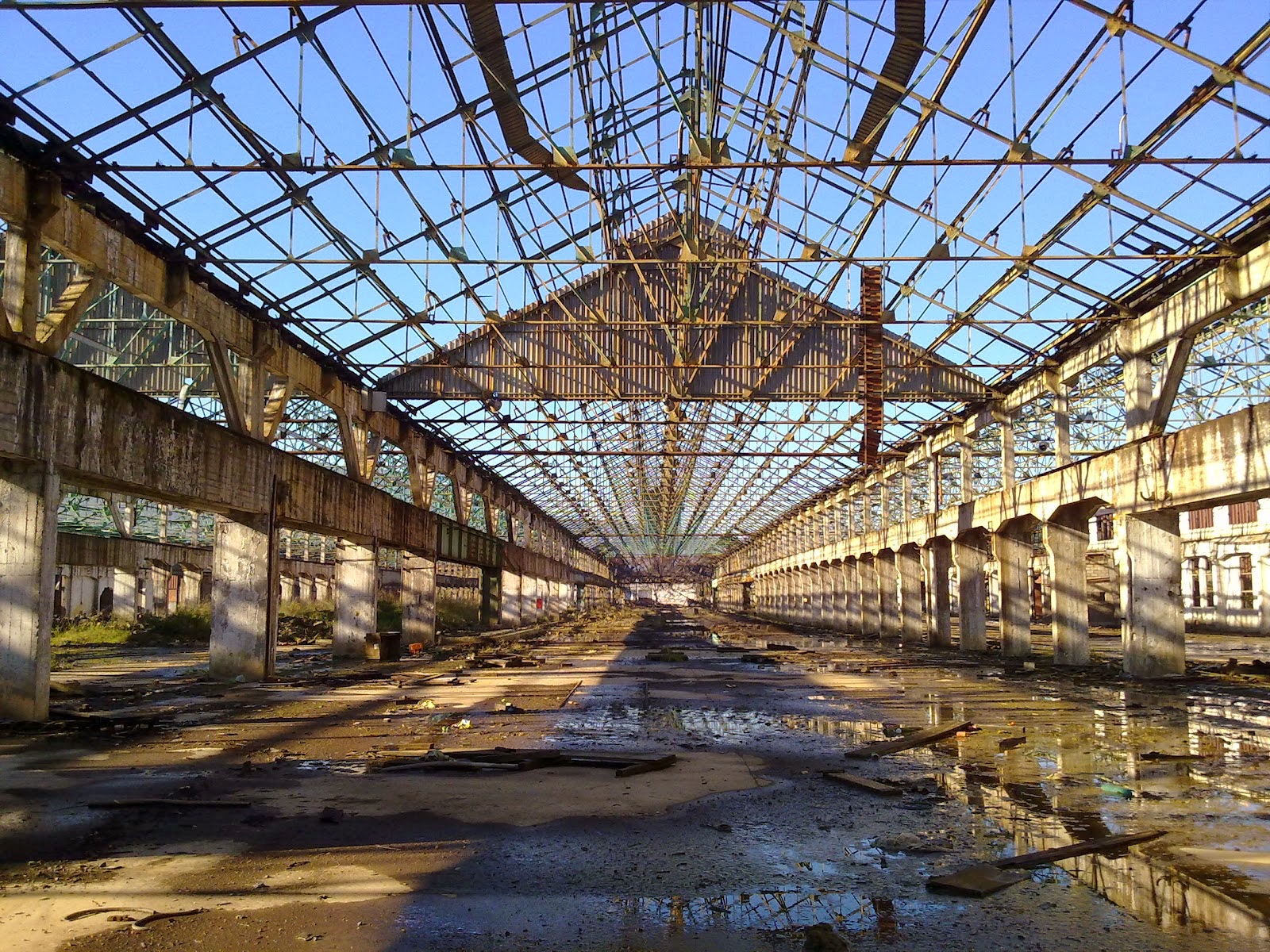
ETA, Ybarra and Amazon Specials
The Zaharra command of the ETApm Special Group entered a Neguri house on May 20, 1977. After uniting and biting four creatures and butlers with their children, they fled by car with Javier Ybarra Bergé.After fighting for the fascists, Javier Ybarra was an advisor to the National Movement of Franco, president of the Provincial Council of Bizkaia and mayor of Bilbao, but above all symbol, symbol of the oligarchy of the Basque Country: He was an advisor to Iberduero and Banco de Vizcaya and president of the company Babcock
Wilcox.ETA asked the families of Neguri a billion pesetas in exchange for releasing the Ybarra. The eldest son created the “liberation commission.” The vice-president of the Banco de Vizcaya, Luis María de Ybarra, advised him to talk to the “hard core” of the bank, which was made up of relatives of the kidnapper. It was run by another branch of the Banco de Bilbao family, with Emilio Ybarra Churruca as a senior official. After numerous efforts, both entities were willing to lend 25 million loans and only a few people from Neguri were willing to subvencionar.Al across the valley, the workers of the
Ybarra company held an assembly to decide whether to publicly request the freedom of the owner. Babcock Wilcox, La Balco, besides being a symbol of heavy industry, was also a symbol of rights, economies and housing for hard work, thanks to the working struggle against the Neguri treasurers. Maybe that's how you can better understand what more than 3,000 workers decided by raising their hands. After several comments on Ybarra and his intrigues, the workers' decision was negative. Although they know perfectly well that what was going to happen to Ybarra was going to directly influence the future of the company. This shows the temperature of the labor struggle at that time.
Javier Ybarra turned his back on the two antagonistic classes. His body appeared on June 18 at the high of Barazar.
The Left Margin has changed a great deal since then. And proof of this is the modification of Babcock Wilcox. It has gone from the creation of wealth to the distribution of precariousness, by establishing the largest logistic nucleus of Amazon in the Basque Country on that site.
Your city, your banks, your factories.
Bilbao returned to the hands of Neguri after the “agitated” years of the Second Spanish Republic. But some bloodlines paid the blood tax of the fallen for the homeland: 30 members of the Ybarra family were executed or fought against the Reds, including the father of Emilio Ybarra, Santiago Ybarra.
Thanks to this support, as they did in the Bourbon Restoration, the Basque oligarchy became one of the pillars of the dictatorship. The offices of the two banks were opened everywhere and their companies continued to impose themselves on the others, being the main symbols of AHV (in particular the bank of Bilbao) and Iberduero (the bank of Vizcaya). During the proliferation of nationalizations or public expropriations in the liberated Europe, in Spain the State and capital were merged through a group of families, divinized in the “heroic mission” that gives money to the coup d’état and became the military vanguard of uprising.
The historian Luis Bilbao Larrondo summarizes it perfectly: “Those who led the most important public institutions in Bizkaia were the same people who had the most important positions on the boards of the major banks and companies.” In other words, in the words of Pablo Díaz Morlán, professor of the UPV: “Except four or five that were not familiar, the Phalanx in Getxo was made up of the Ybarreses.”

Photo: L. Tejedo / EFE
Across from Neguri
Ezkerraldea has been the experiment of the capitalists, who organized the world at their will. As they said in Barakaldo, “here we only lack a funerary of the AHV brand”, but it was not necessary, since in their factories there were many chances of dying (slow or fast); in the casting they forged steel pallets and iron ingots, bad breath of fire, coke powders or sky, and the water was stained with black venom while breathing toxic gases.
The AHV reached 14,000 workers. No wonder that the ybarra empire was the most powerful steel and iron cartel in southern Europe. And as “modern people”, these same AHV patterns created the newspaper El Pueblo Vasco in 1910, an effective rector of public opinion, which remains a mirror of the neoliberal correction, with brothers such as El Correo and El Diario Vasco in the heart of the Vocento group.
The AHV became a permanent war. Between a few abusive and many undervalued. Year after year, Barakaldo’s workers continued to fight the owners of the same surname. The class struggle, more than a theoretical construction in the Left Margin, is reflected in the 2,300 working days lost by the strikes from 1917 to 1923. But it's not good. In 1950, one in five deaths in Bilbao was due to tuberculosis. Maybe that's why, at that time, El Correo did not admit such a miserable kind of death.
But as the fixed wage is always more attractive than seeing the empty plate, Bilbao went from 536,000 inhabitants in 15 years to 846,000 in 1975. In 1980, life also required iron. In a five-kilometre area between Barakaldo and Santurtzi, 30,000 workers were in full employment.
The labor struggle has marked the surface of these burning lands and along the way thousands of Castilian, Galician or Extremadura have become houses. And the construction of the historic strength of the PSOE. Although that “working-class and socialist” party became a member and partner of those banks and bourgeois that were once confronted.

From fascism to socialist roots
Transition came without transients. None of the essentials was touched, but there was a strong economic crisis. “You have to adapt to the new times,” the PSOE dressed in panas said, shaking the flag of modernity. Thus, the large Basque bank sacrificed old businesses from the Left Margin to save their profits, not even worrying about the modernisation of the industrial monoculture of Bizkaia. Goodbye. They called it deindustrialization. And for this, he had the necessary time, support and power.
The PSOE government rescued the Basque oligarchy in danger of defeat from public money. He decided to dismantle the industrial fabric of Bizkaia and most of the provinces of the Spanish State, and in addition, in the years of unbridled developmentalism, the Socialists liquidated another hot potato left by Spanish capitalism: a nuclear power plant on the Biscayan coast.
In the words of Manuel Gómez de Pablo, president of Vizcaya and Iberduero, “the closure of Lemoiz showed that Iberduero was close to the financial collapse. The nuclear moratorium was fundamental because we were charging for the station’s stop.”
And so Lemoiz, a symbol of the fight against nuclear, was “finished”. This nuclear charge has been paid by citizens through the electricity bill between 1996 and 2015. EUR 5,717 million. Excellent lifeboat for the benefit of Iberduero (Iberdrola antecedent) and Vizcaya.
The Basque banking system was strengthened from the crisis that buried more than 50 banks. More than 100,000 workers sent to unemployment throughout the Spanish state are in Ifrentza. But not without fights. A struggle as heroic as it is unbalanced, with the Left Margin as the main exponent.
Bilbao and Vizcaya were partners and sympathetic travelling companions of the neoliberal modernization of Felipe González. This facilitated the merger of the two banks in 1988.
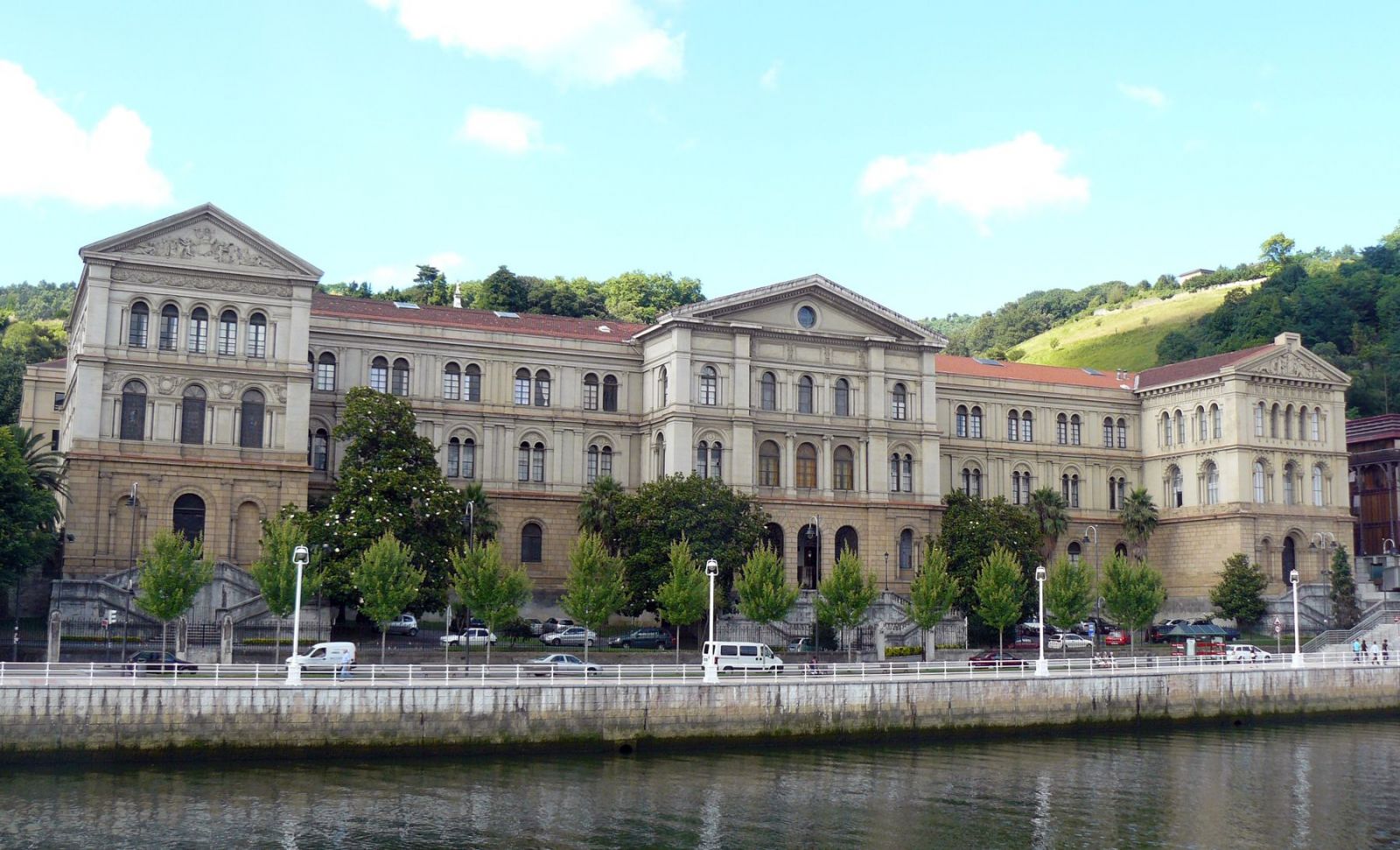
Photo: Wikipedia
BBV: first large merger
The merger between the Bank of Bilbao and the Bank of Vizcaya on 27 January 1988 was a milestone in the history of the Spanish State banking system. The aim was to save the mistakes made by the banks themselves and channel them into the new courts. This is the case with the partial privatisation of Repsol, which in 1988 put BBV as the main shareholder of the oil company.
By then, the Bilbaínos, with the prudent José Ángel Sánchez-Asiain at the head, surrounded themselves with representatives of the new political class. Among them are some political cadres of the Basque Government, such as Mario Fernández or Pedro Luis Uriarte. And they also paid better salaries to their 16,000 workers, also taking care of the “friendly” unions, when unemployment moved around 25%.
The managers of Vizcaya, lovers of liberated, futuristic and speculative banking, presided over Pedro Toledo Ugarte. The most modern. He despised trade unionism and, with ideological consistency, paid far worse to his 11,000 workers. By then they embraced the new financial doctrine of the sharks of Wall Street, dressed in Armaniz on the yacht and with the greasy hair of gomin, with the pride of the international banker.
However, both Sánchez-Asiain and Toledo Ugarte left the same place: Deusto University, founded by the Jesuit Luis Bernaola. Bilbao, Vizcaya and Deusto have been on their way through history.
The merger of the two banks resulted in strong competition for power. Until in 1990 the Bank of Spain appointed a single president of the BBV, a man with no history and second category, but with a great pedigree: Emilio Ybarra Churruca. Thus, the balance tilted towards the bank of Bilbao, with a large network of offices throughout the state.

Very different differences in the same currency
The Bizkaia Tower was the headquarters of the Vizcaya Bank since its construction in 1969. It had to symbolize the permanent power of plutocracy bilbain, but when all power was transferred to Madrid in the time of the Aznar, it lost its condition. The Hacienda de Bizkaia has ended up rescued, one part recycled to public offices and another, with great irony, will be a shop of cheap clothing – that of the Primark muiltinational membrane –, a reflection of the monetary capacity of the Vasca-working class. A few meters
away is the Iberdrola Tower. Phletic building of 165 meters to show who runs in Bilbao. BBVA has lost its links with the social environment that gave it meaning and cohesion, but Iberdrola declares the opposite: its headquarters, inaugurated in 2012, is the only box office surplus of the Vizcaine oligarchy. It is the strongest rock of Basque capitalism, the cradle of the shareholder strengths of local goods and modern revolving gates. The expansion of Iberdrola in the 40 countries that produce or sell energy and the local political climate condition the prosperity of Iberdrola, which is the first company in the Basque Country from afar, but also the
fifteenth in the Spanish State in billing. Only ahead are the giant supermarkets (Carrefour and Mercadona) and the biggest competitors such as Endesa and the oil tankers (Cepsa or Repsol). But you can see the shadow of its size in the benefits it earned in 2017: EUR 2,804 million, free of dust and straw. This highlights the “little” importance of other Basque corporate giants, such as Petronor (178 million), CAF (43 million) or Eroski (33 million), who are clearly outside this great league.
Conquest of America
The Basque oligarchy resumed its claims on the other side of the ocean. But this time, no armor or crosses.
Among the men who designed the American landing of the BBV were, in addition to Emilio Ybarra, José Ignacio Goirigolzarri, current president of CaixaBank, and Mario Fernández, vice president and president of Kutxabank during the term of office of Carlos Garaikoetxea. From some tax havens, Pedro Luis Uriarte led the operation of taking over some of the most profitable banks in Latin America.
Uriarte, the man from the bank of Bilbao, was Councillor of Economy and Finance of the Basque Government from 1980 to 1984, after lehendakari himself Carlos Garaikoetxea asked Sánchez-Asiain “to seek someone for that responsibility.” In other words, the public office of the PNV, defender of the Economic Concert and of the quota, under the motto “everything is worth”, developed the conquest of the American market.
Starting with Investment Bank in Puerto Rico, they began to make massive purchases from banks, such as Mexico, Venezuela or Peru, with confidential information and international sponsorships and with power groups embedded in the financial world and the states. It started like this and ended like this. During those years the Neguri clan advanced its tomb, as we shall see later.
BBV + A
Ybarr-Uriarte, the perfect pair of weavers and nationalists, turned Vizcaine banking into a gigantic global financial and freed it from the guardianship of the state.
On October 19, 1999, after the public address of the Santander Central Hispano, Emilio Ybarra (BBV) and Francisco González (Argentina) announced the large final concentration of the Spanish banks. Argentaria was created in 1991 from the union of several banks and public credit institutions, and later Felipe González, first, and José María Aznar, later, privatized it. Without changing the corporate image and adding to the logo a sad “A”, a new milestone was established on the arduous path of Spanish neoliberalism.
In 2000, the U.S. magazine Forbes called BBVA “the best bank in the world.” The legacy of Emilio Ybarra and his friends from Neguri was to turn the two legs, the banks of Bilbao and Vizcaya, into an international corporation, named BBVA.
For Emilio Ybarra was the last prestigious fusion photography. In 2001 he was excluded from the bank's management, breaking with the issue of Jersey's secret accounts. Absolute power was left in the hands of Francisco González, a Galician wolf from unscrupulous Wall Street, who was not a banker and did not have a reputable family. From managing a small stock market company to invest the money of a few Madrid billionaires, he became the owner and master of the second largest bank in Spain. But these weather rises were possible at that time, “Vayase, Mr. González,” because a politician managed to be true.

Bye bye Neguri
Coinciding with the victory of Aznarismo, Madrid became the only and undisputed venue for big business. Also for BBVA.
The eight years of the Aznarato reconvert Spanish capitalism. ERC Deputy Joan Puigcercós called Monopoly People the group of allied executives of the popular government, who used privileged mechanisms of privatization to occupy the center of economic power. They were stock brokers, tax advisors and people moving on the slippery slope of finance. Rodrigo Rato was the promoter of the Ministry of Economy and his highest personifications were Mario Conde and Francisco González. Years later, Rato and Conde ended up in jail and González, charged and expelled from the elite.
The fall of Neguri was a marginal effect of Jersey's secret accounts in 2002. The forces of centralizing acnarism managed to expel Neguri Powerra from the first circle of power.
But before closing the door from outside, Emilio Ybarra and Pedro Luis Uriarte got a €57 million gift as “compensation”. Subsequently, the prosecutor’s office also analyzed these awards.
What came next was a kind of secret war, between the new head of the bank and those he considered to be a threat to its supremacy. In this conflict came police commissioner José Manuel Villarejo, who has become the symbol and face of the state sewage system. In 2004 he was hired by Francisco González to reduce his rivals.

Mario Fernández: Devil's Jeltzale Lawyer
This lawyer was vice-president of the government of Carlos Garaikoetxea (1980-1985), and his history is very useful in explaining the complicity of the economic power of Bizkaia with the factual powers of the Spanish State, even when the ideological wars between conservative nationalism and aegistic nationalism seemed to be two antagonistic areas. The "nationalist" who defended the economic concert, the elitist training received at the University of Deusto made him a privileged interlocutor of the great entrepreneurs. His resume makes it clear that the revolving doors between nationalism and neo-Nazi banking were natural issues.
After leaving the first line of professional policy, BBVA signed Mario Fernández. At the end of 2001, he managed to manage the $19.2 million return from Jersey to the United States. This money was earmarked for the creation of 22 pension funds for BBV directors and senior executives.
He was also involved in the secret accounts scandal, as it was the bank’s senior position. Francisco González began inside the purge of the Biscayan people, left the bank and entered the template of the office Uría Menéndez, one of the main references of Spanish capitalism. He used all his energy and his tricks to approach the judge of the BBVA case and leave the investigation of Prosecutor Martínez Madero.Nunca lost relationship with his party, the PNV, and his loyalty was awarded in
2009 with the presidency of the BBK savings bank. In 2013, in the wake of evictions, he said that "the new law cannot become an invitation for people not to pay rent."
The “conciliation works” he carried out in Kutxabank gave him a symbolic sentence – six months in prison – for “EUR 5,780 per month of political payment” to Mikel Cabieces, a former delegate of the Spanish Government, as part of the agreements of “PNV, PP and PSE in the Kutxabank privatisation process”.
Always in search of paradises
The relationship between banks and tax havens is very old. The Franco dictatorship also had its own: Tangier. There were all the central banks, headed by Bilbao and Vizcaya. Until Tanger joined Morocco in 1959. This date, “by chance”, coincides with the speculative boom in Marbella, Andalusia. But everything changes, and those underground flows of money will lead us to the island of Jersey, on the English Channel.
Offshore companies are not the present invention. There are no banks without extraterritorial offices that transform the flow of money into capital. This was demonstrated when, on 26 May 2000, some 200 civil guards entered the BBVA tower on the Paseo de la Castellana in Madrid. Register related to the alleged diversion of funds from the 1992 Seville Universal Exhibition.
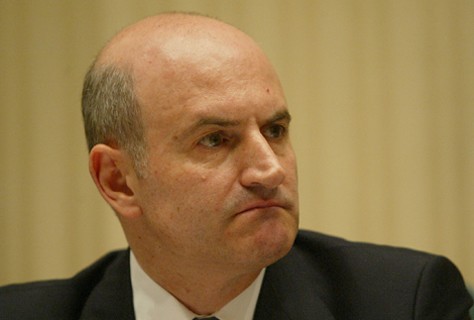
The prosecutor of the National Court, David Martínez Madero, calculated that this major operation would divert media attention from another exploration: Seat of BBV Privanza Bank. And it didn't fail. Martinez Madero went into an office and looked at a book someone had left at the table. It had a striking title. “Trust Product Manual”. This manual was fundamental to the case, in which the structure of BBVA was explained in order to deceive the treasury, as well as all kinds of services it offered. The elaboration of the manual is attributed to Estanislao Rodríguez Pone, a BBV worker. In 2001 he was Aznar Secretary of State for Finance.
Through BBV Privanza Jersey, on Offshore Island, they wanted to avoid foreign exchange from the circuit of world tax havens that channelled the money of BBVA’s customers.
600 current accounts were detected. After a year of research by experts from the Civil Guard, renowned names were revealed among the clients: The Bilbao bishopric, the former owner of the luxury clothing company Burberry, the Carceller family, owns Damm beers... EUR 420 million was transferred to tax havens. With 500 million pesetas, the bank would open the door to the tax leak.
Later, the prosecution began to join the ropes and eventually realized that this corrupt structure was not created only for VIP clients, but for other dark movements of the bank, which benefited financially the members of the board of directors, led by Emilio Ybarra Churruca.
He didn't even imagine that Getxo's favorite son was going to come to court and that the world would learn about the techniques of his fiscal flight. The list of defendants was similar to half of Neguri and the allegations were fat, due to unfair administration and falsification of documents.
But the National High Court takes the case in a very elegant way: “Since BBVA is a new entity resulting from a merger, it cannot be held liable for the infringements committed by BBV and Argentina.” The judge acted very generously. Along with the fiscal amnesties carried out by the executive of Mariano Rajoy in the midst of the economic crisis, he contributed to alleviate the uncomfortable situation of the high Spanish bourgeoisie.
During the long wait for the investigation, the second bank in Spain was terrified. Internal divisions accelerated and Francisco González took advantage of the situation to purge Ybarra and the Negurites.
But the fat part of the cake was still missing.

Puerto Rico, the door of conquest
In 2001, Baltasar Garzón presented himself as a candidate for the Nobel Peace Prize and, therefore, a super judge immersed in a permanent media tourné. In November, he moved to Puerto Rico and, at the end of the talk, he was approached by a person informing him that BBVA had a lot of information about the banks bought in Latin America. Nelson Rodríguez López was a lawyer, legal advisor, director of the BBV International Investment Corporation founded in Puerto Rico by the bank of Ybarra e Uriarte in 1995.
"BBVA had money to support journalists and finance the media to its favor.Todos the benefits that
Ibex makes to the press are translated in one way or another"
David Jiménez, former director
of the newspaper El Mundo
Puerto Rico, the free state associated with the United States, is the fiscal sky, not paradise. It gives a great “freedom”, but all operations are formalized, so you can follow the path of money. Nelson Rodríguez had the roles of these BBV transactions, which he signed as a notarial attorney and testified to all accounting movements.
And so, David Martínez Madero, in charge of the lawsuit, had before him the dream of every prosecutor: a real insider, with knowledge and documentation, willing to explain the financial engineering that allowed Bilbao Vizcaya to jump to Latin America through various illegal procedures.
Some of these purchased banks were Probursa from Mexico, Continental Peru and the Colombian Livestock Bank. Through Puerto Rico, money was laundered to “buy shares to people or at an excessive price.” These were triangular operations, “to facilitate BBVA’s purchases of banks and to immediately gain control”.
The investigation was carried out silently and without pressure, until in April 2002 the newspaper El Mundo opened the doors of hell. The BBVA case reached the prime time of television.
The exclusive ones signed by journalist Casimiro García-Abadillo, current director of the right-wing media El Independiente, which was called “The Fall of Winter”, were a key piece of the last blow to Neguri’s caste. The World was a decisive factor in bringing down the nefarious power of the bank's dome.
Of course, the attitude of the media controlled by the Ybarra family was very different. None of the hundred companies associated with Vocento published articles according to the thesis of the Anti-corruption Prosecutor's Office, from the ABC of Madrid to El Correo de Bilbao.
It is worth remembering what former Director of The World, David Jiménez, said in his book The Director: “BBVA had money to support journalists and to finance the media they were betting on. All the benefits of Ibex for the press are translated in one way or another, and when information is compromised, then…”.

Rescue Garzón
The gravity of the case could jeopardise the second bank in Spain and the Spanish system itself. From 24 to 25 April 2002, in the office of Baltasar Garzón, everything imaginable and more happened. Prosecutor Martínez Moreno himself told Oriol Malló about the calls of President Aznar and King Juan Carlos I.
What happened at the highest level had practical consequences. Baltasar Garzón killed the BBVA file in the famous April 25, 2002 car. Although the investigator is the Prosecutor’s Office, he did not dare his opinion and brought Nelson Rodríguez out of the witness group, alleging: “No defining element is extracted from his statements under summary secrecy.”
Nelson Rodríguez, a witness protected in the spring of the FBI and the National Court, was recognized as a criminal in the summer of 2002 after the resurrection of an old court case — when in 1998 he suffered from drug and alcohol problems, he stole $49,000 from the bank. For several days they remained in prison without communication, naked and without eating. He was subsequently expelled from the professional career and condemned to absolute ostracism.
Aznarren and George W. It is a direct consequence of the Bush agreement. In early 2002, it was decided that it was time to silence that awkward witness. In exchange for paralysing the issue of BBVA, the Spanish Government would show the best position on Washington. The script was literally completed in the coming months. In fact, as a worker at the BBV International Investment Corporation, Nelson Rodríguez oversaw that monetary cleansing also affected several names of the Puerto Rican elite, whose links with senators, congressmen, and Washington officials were not a tasteful dish for the US Government.
Garzón destroyed with a hammer the credibility of the principal witness and, in addition, exempted the Secretary of Finance, Estanislao Rodríguez Pone, from being charged, making a great favor to the bank and the government. In all his writing, Baltasar Garzón did not argue when, how and why Nelson Rodríguez's testimony ceased to be consistent.
The bank got no judge and journalist to compare copies and originals of Nelson Rodríguez's papers. Thanks to the most valuable services of the Real Sociedad Baltasar Garzón.

Down to the sewer
In 2019, it was time to avenge the family of Neguri, expelled from the back door of BBVA, when Francisco González, his hated enemy, resigned from the honorary presidency of BBVA and joined the accused of the National Audience, for a scandal related to the famous Commissioner Villarejo.
If you throw a stone at capitalism, it will return the stone to you with a price. Everything is on sale and for sale, as well as the professionals of the state sewers. Police officers who carry out dirty government orders subcontract their “special” services to whom they are willing to pay. In the morning in Osakidetza and in the afternoon these mercenaries began to act as a doctor who works in the private clinic. They privatized the mechanisms of espionage, control and blackmail, which for years were under the control of the Ministry of the Interior, to “fix” disputes between companies or personal revenge. It is a sort of elite sewer, in which Villarejo and his network of friends.
According to the case study, Villarejo performed different works for BBVA, such as espionage, telephone punctures, infiltrations in security services and follow-up to important public offices, entrepreneurs, shareholders and journalists. Villarejo contacted 49 politicians, journalists and collaborators to boycott the construction company Sacyr, who wanted to join the BBVA board of directors. Villarejo's actions include 14 attempts to pierce the mobile phone of Miguel Sebastián, a former BBVA senior manager and former Minister of Industry, Tourism and Trade.
However, the Villarejo case is a children's game compared to the history of looting carried on the back by a bank such as BBVA.

that spends the most money in the armory, financing large-impact macro-projects, including Donald Trump reactivated the Dakota Access pipeline, a project that has undermined the U.S. native peoples or a real 35,000 kilometer Kurdish supervisor.
Photo: Aritz Loiola
Almost always
BBVA has earned 1,320 million euros in the fourth quarter of 2020. Half of the benefits come from Mexico. Without it would be another bank, like Sabadell. The low interest rate and the low price of Mexico's money are necessary to survive.
Although the headquarters of BBVA was in Bilbao for many years and, for tax purposes, has its legal residence in Bizkaia, most of the operations are carried out in the Spanish capital. But in any case, the benefits that BBVA obtains in Mexico, Peru or any part of the world do not go to the Spanish Treasury. In order not to pay the double tax, they go to some tax havens that do not want to bring directly to the Spanish State to obtain commissions or actions.
Because the reality is that the owners behind the scenes are not from Getxo, nor from Madrid.
And today, where and what is that Neguri jet-set? They're still there. The terrible kick in the BBVA case left many of the bankers outside the divine caste of the bankers, but none of its members has become vagrant. In the absence of actions, they have a rich property. The old houses have become a luxury home. The great old palaces, such as the monumental palace of Lezama-Leguizamón, emblematic of its emblems, are used to celebrate weddings and celebrations, for everyone who wants to socialize a few hours with the biggest ones. Everything is invented and reinvented.
Although not orbited around Iberdrola, Coca Cola or BBVA, the upper classes continue to live in Las Arenas, Neguri and La Galea. Bergaretxe, O’Shea, Urrutia, Aznar, Ybarra, Careaga, Delclaux and others have been joined by members of the refined Sendagorta lineage owned by Sener. And some of them still lead societies like Vidrala, Viscofan, Elecnor, Iberpapel, Vocento or Cvne.
“Banka (almost always wins),” says Oriol Malló in one of the last passages of the book. It's curious that it's not, if you look at history. But since politics is the art of the impossible, in these times marked by the struggle of the story we must remember the people who worked in the iron mines, in the construction of railways or in the construction of steel. When they were able and able to fight again, and also, at specific times, they managed to shake the oligarchy and its followers. And some, moreover, have not resigned, we will find them among those who are claiming a dignified pension every week.
Arma nuklearren produkzioarekin, mantentze lanekin eta modernizazioarekin loturak dituzten hainbat enpresa aztertu dituzte, eta horien artean agertzen dira BBVA, Santander bankua eta SEPI.
Frankismoa ez zela 1975ean amaitu diktadoreak ohean azken hatsa eman zuenean, hori badakigu. Erregimenaren haziek bizirik iraun zuten poliziaren tortura ziegetan, justizia auzitegien sumarioetan eta militarren zein politikarien deklarazio kolpistetan –Aznarrek azkenaldian... [+]
2019an BBVAren Akziodunen Batzarra gauzatzen ari zen bitartean egindako protesta baten harira, sei pertsona identifikatu zituen Ertzaintzak, eta mozal legea aplikatuz horiei isuna jartzea proposatu zuen. Sei kideetako bat absolbitu du berriki Gasteizko epaile batek, ekintzari... [+]







